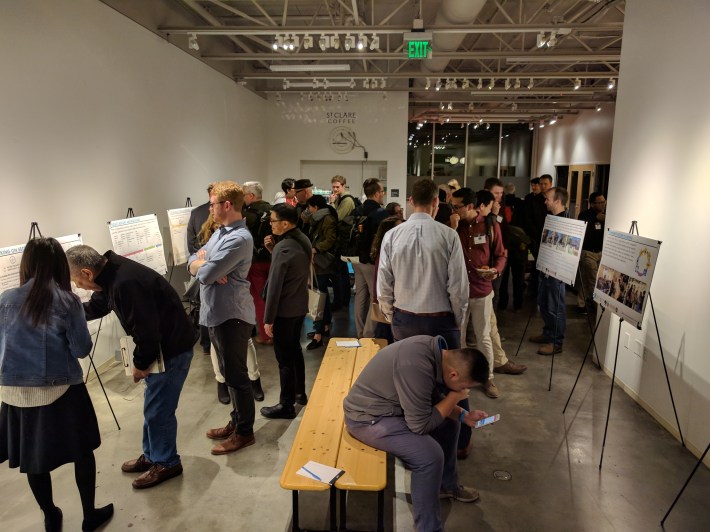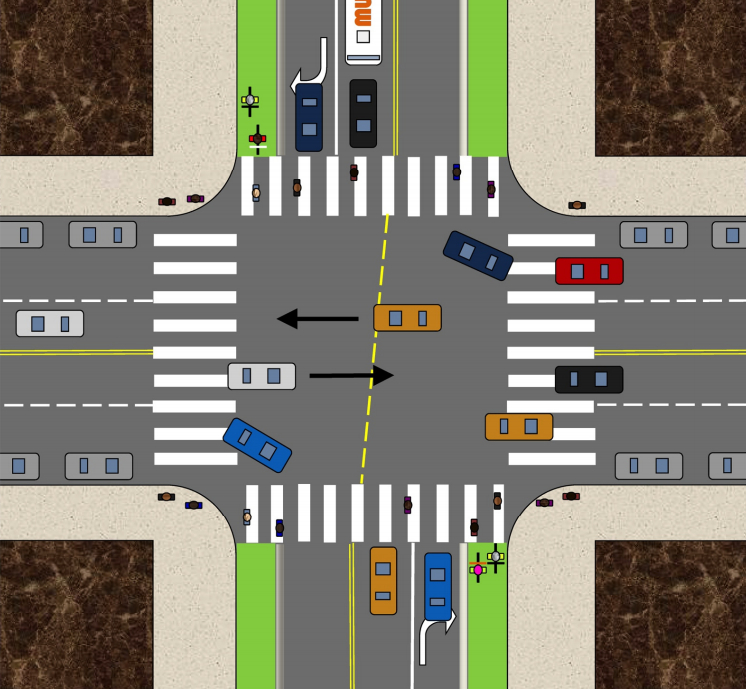The $20 million Second Street Improvement Project is finally underway. No planning speed records were broken.
Yesterday evening, San Francisco Public Works and the SFMTA held an open house at SPUR's Urban Center on Mission Street in San Francisco to display some familiar renderings and sketches of the project. And if it feels like you've been hearing about Second Street for ages, there's a reason: Streetsblog first covered the project back in early 2012, when a bureaucratic oversight delayed funding. The design for Second Street, which include a raised, parking-protected bike lane and bus boarding islands, was approved in August of 2015.
![Second Street Streetscape Improvemnts Project Segments Map-SM [102517]](https://lede-admin.sf.streetsblog.org/wp-content/uploads/sites/47/2017/12/Second-Street-Streetscape-Improvemnts-Project-Segments-Map-SM-102517.jpg?w=710)
One would think the agencies have done enough open houses and public meetings at this point. "I'm confused why they're doing this after they broke ground," said Elias Zamaria, a software engineer, bike advocate, and a regular at these meetings. "Overall it looks nice. I used to work on Second and it was scary to bike there."
That should finally start to improve, at least to some extent. Streetsblog was happy to see that dangerous "mixing zones"--areas that spill cyclists out into intersections in such a way that they have to cross paths diagonally with right-turning cars--will get phased signals to help avoid conflicts (see lead image). That means cyclists will stop and wait for cars to make right turns in front of them. Then cars will get a red arrow, and bikes will be permitted to move straight across. But there's nothing to physically protect cyclists once they're in the intersection. That means if cars don't adhere to the no-turn-on-red rule, bad crashes are still bound to happen.
"Wouldn't it be better with protected intersections?" asked Zamaria. Dutch-style protected intersections--which use concrete islands to force motorists to take right turns at a crawl and improve sight lines between bikes, pedestrians, and motorists--make intersection crashes less frequent and far less deadly when they do happen. "We need to take bolder moves," said Zamaria.
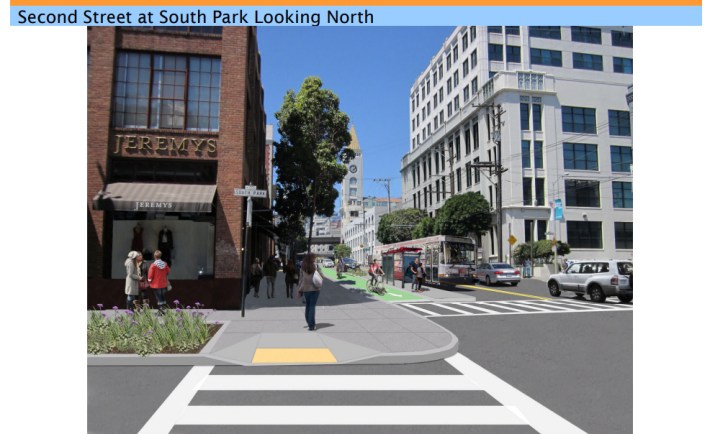
Kyle Grochmal, another cycling advocate who frequents outreach meetings, said he was shocked that this project has taken so long to get started. He echoed Zamaria's calls for better intersection treatments. "They refuse to paint bike lanes through intersections," he said, shaking his head. " He hopes red-light cameras will be installed to reduce the number of motorists who, he believes, will ignore the red turn arrows and potentially crash into cyclists.

It was also a little confusing as to why parking meters in the renderings and designs are still located on the far side of the bike lane from cars--a design that is already known to cause confusion among motorists, who may be tempted to mount the two-inch raised bike lane and park against the curb, as they are habituated to do. "The two-inch raised bike lanes on Market Street don't work, so why are they putting them here?" said Grochmal.
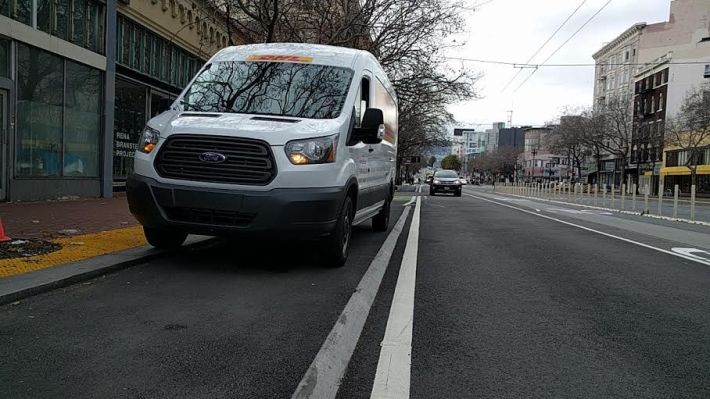
Jamie Parks, of the Livable Streets division of SFMTA, said it's not too late to continue green bike lane stripes across all the intersections. He said putting parking meters on the left of the bike lane would prevent disabled people from using the bike lane to navigate to the corner, where they can use a ramp to get onto the sidewalk. Then again, if the bike lane were at sidewalk level--as is proposed for Market Street--someone in a wheel chair transferring from a car could simply go directly across the bike lane to the sidewalk.
Meanwhile, not everyone at the meeting was focused on the bike lanes. Aida Berkovitz, who lives in the Clocktower building on Second, said the designs were "kind of what I expected," adding that, as an occasional motorist, she was "disappointing that left turns from Second onto Harrison have been restricted," which would prevent her from driving directly to many destinations in downtown.
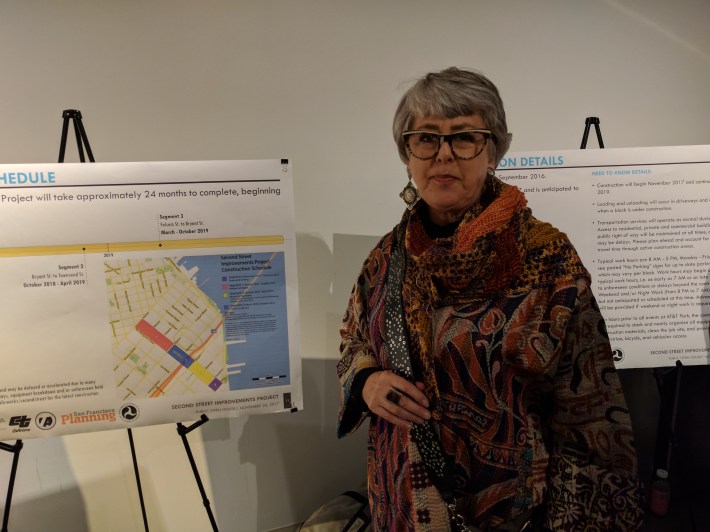
The architect David Baker, bike helmet at his side, was disappointed that the "porkchop," the high-speed turnout at Harrison and Second, won't be closed for another two years. He said, as a pedestrian, he's had many close calls there, including once when a motorist almost ran him down in the crosswalk and yelled out the window "F*ck you, I'm almost on the freeway!"

City officials, meanwhile, said this outreach meeting was mainly to get people familiar with the project timeline and expected construction disruptions that will continue through the winter of 2019.
Either way, at least work is finally underway and, once completed, the street will be safer than it currently is.
